India’s Rising Tide of E-Waste
“At first, we dealt with record players, radios, VCRs and black-and-white TVs. Later on, CD and DVD players followed. Finally, computers arrived, and we started business with eWaste,” explains Mohammed Moinuddin, an e-waste recycler, sitting in his small village near Kolkata in Northeast India.
Nearby lie piles of electronics, stacked nearly two meters high. Mostly composed of dark green circuit boards, they are haphazardly stacked against the walls of the village of Sangrampur, a small hamlet located 30 miles south of Kolkata and just 25 miles from the Indian Sundarbans, a UNESCO World Heritage Site.
Among the multicolored piles of plastic and metals, women, young men and children use small hammers and chisels to pick away at the various circuit boards, breaking them down into increasingly smaller pieces, which are then separated and collected together.
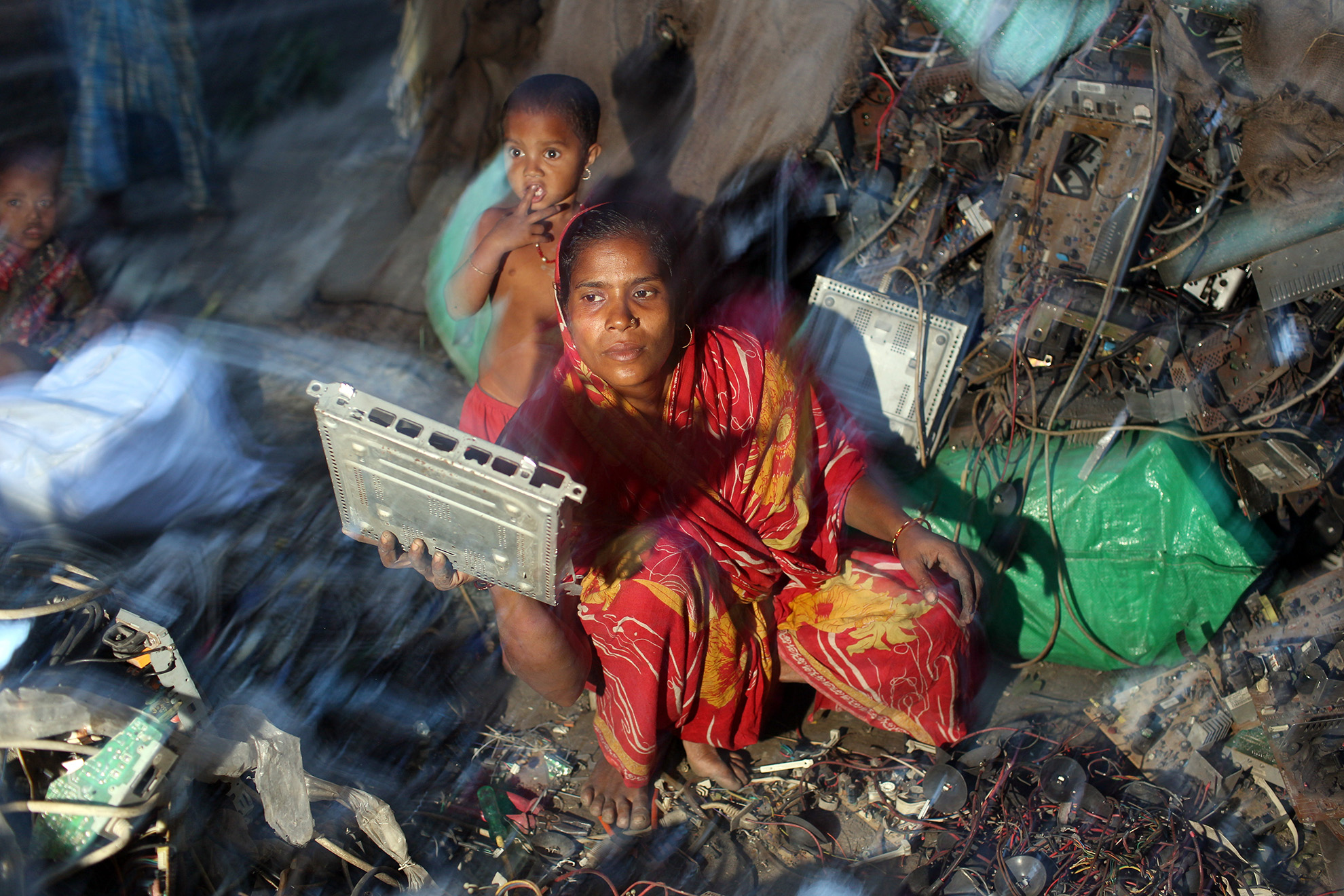
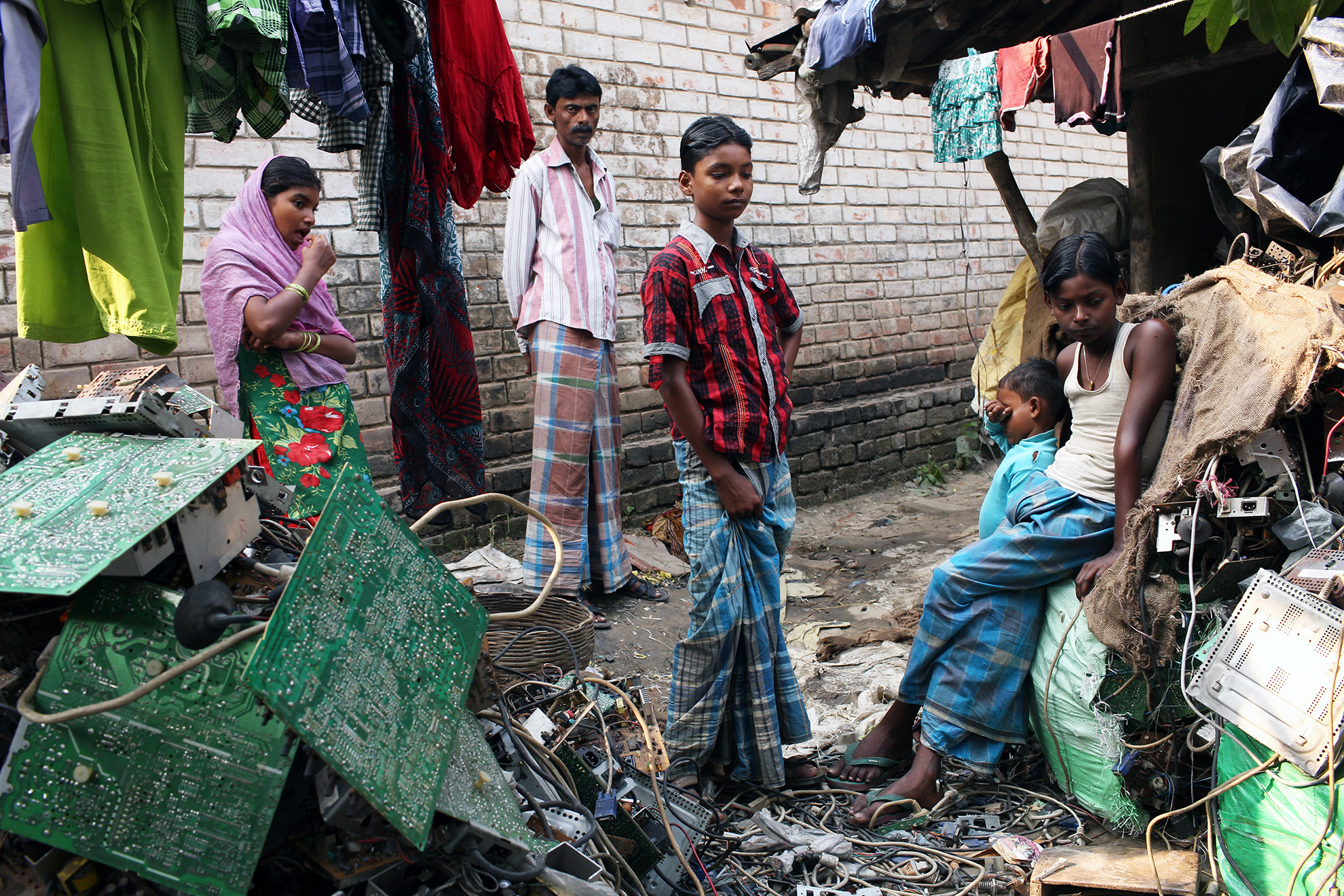
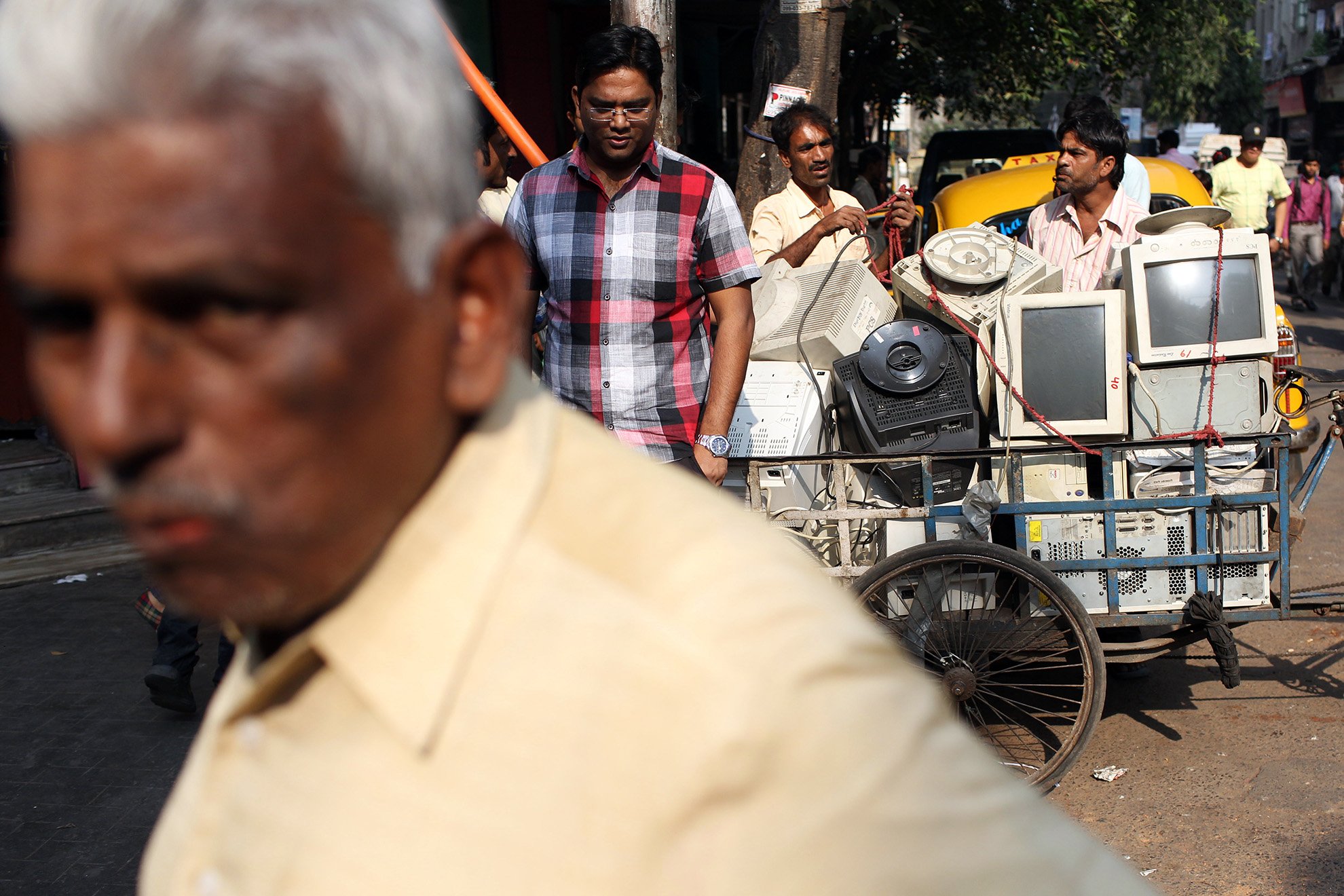
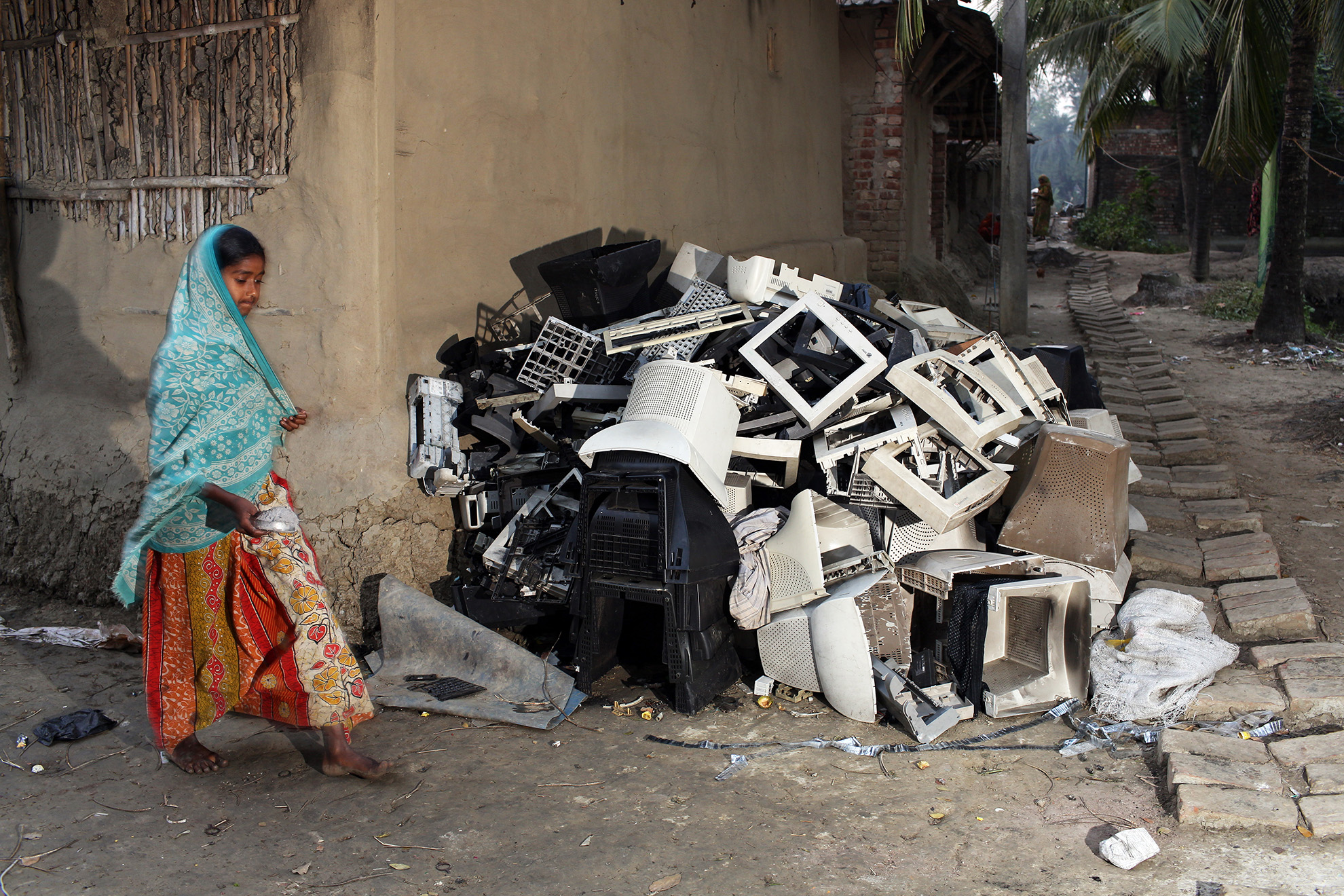
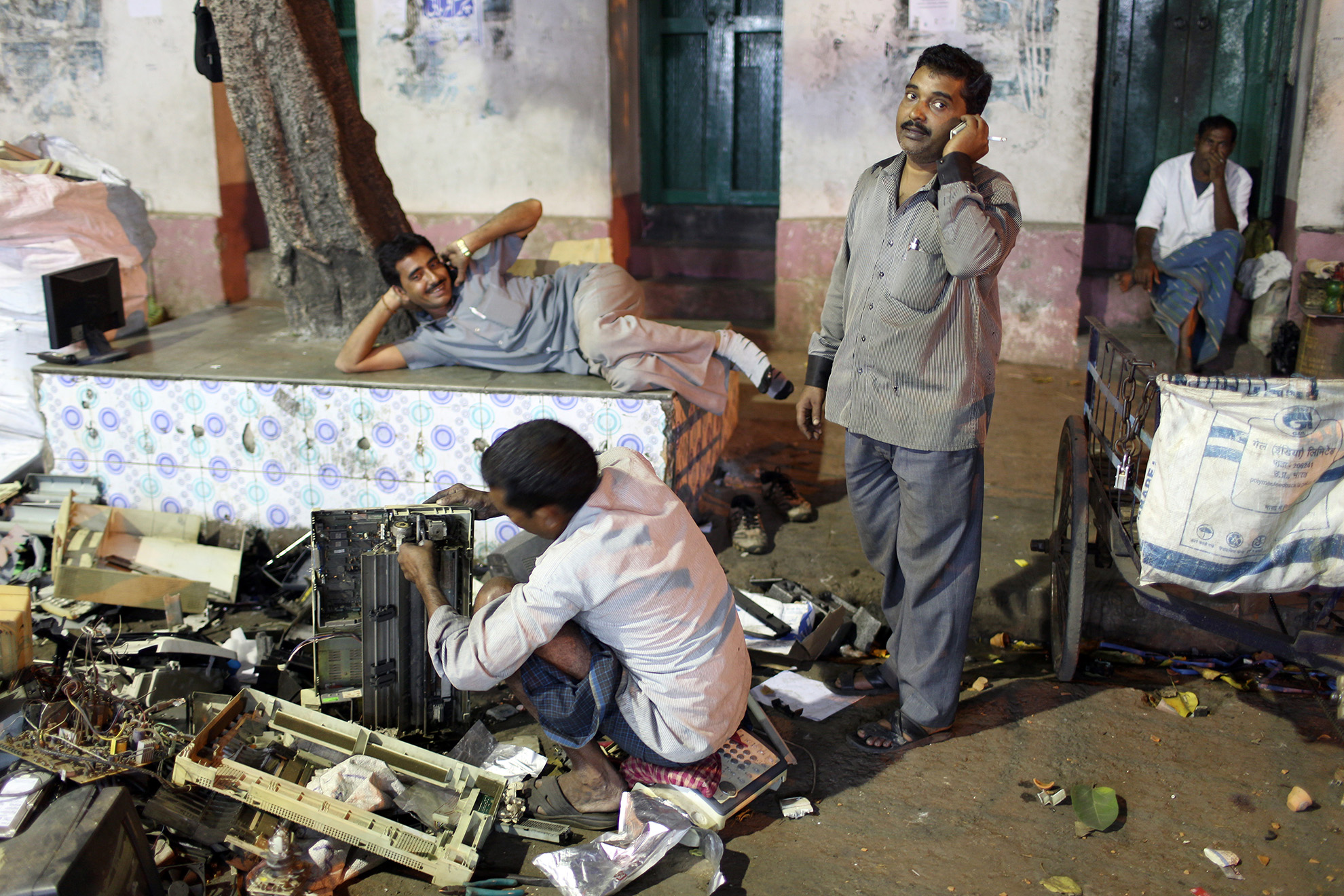
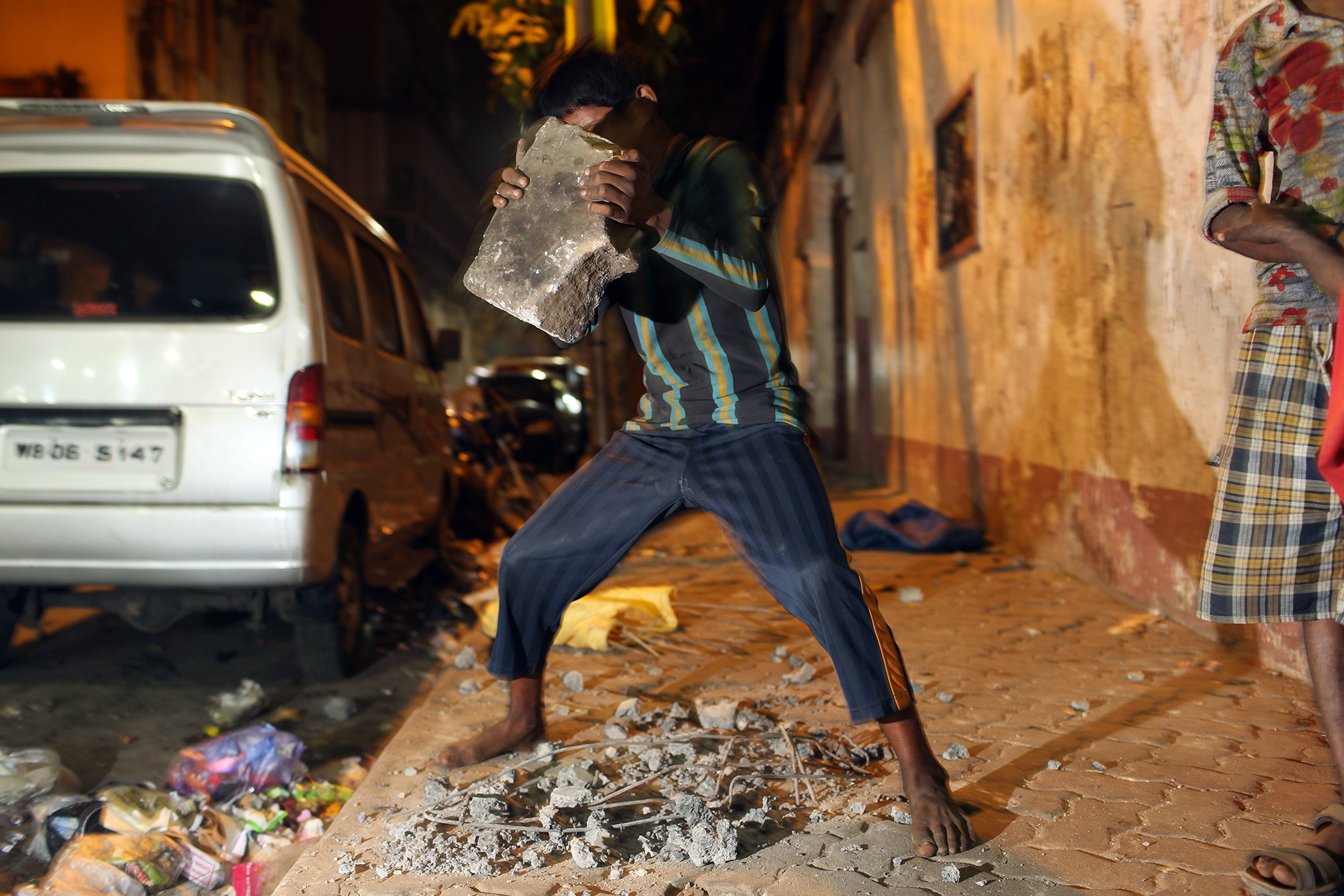

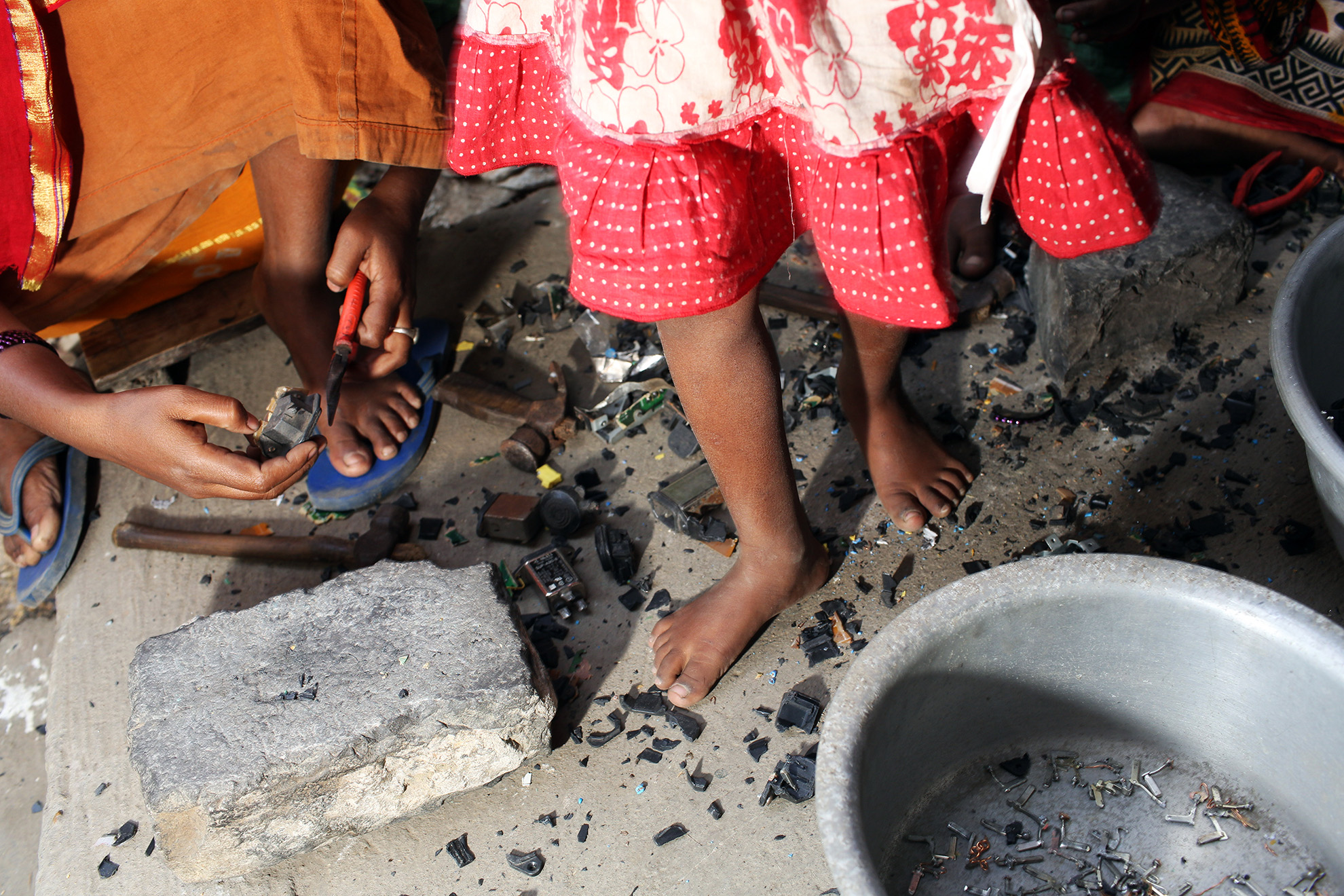
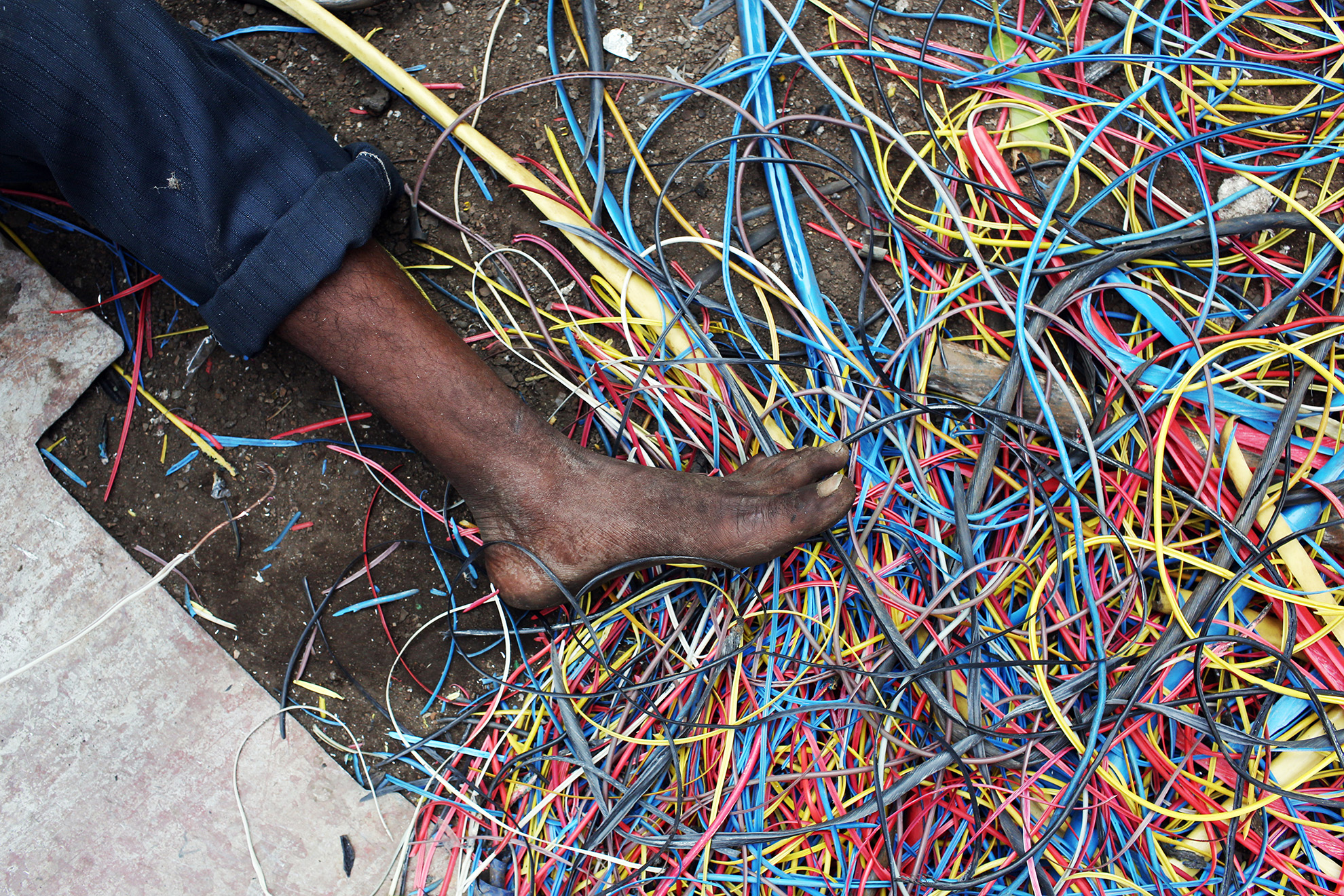
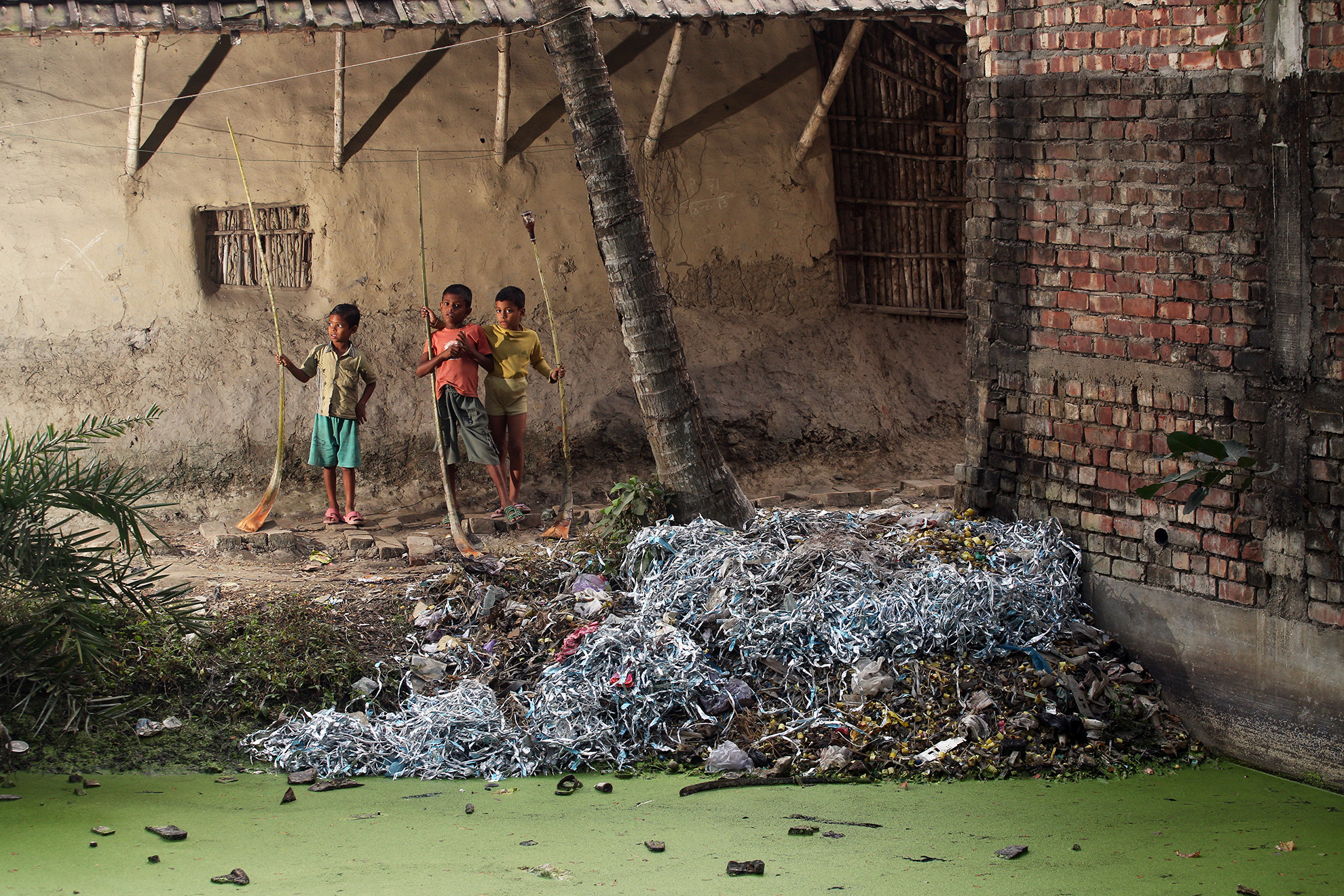
“It’s all collected from Kolkata and brought here, dismantled and broken down,” Moinuddin says. “Since 2010, there has been quite an influx in the electronic market. There is increased supply, increased usage, increased waste production and increased dismantling.”
The small operation in this village is all part of a growing informal industry in India, which is expanding as a result of the country’s boom in electronic waste.
The majority of electronic waste in Kolkata and throughout India is recycled in this “informal” sector, which is unregulated and pays little attention to the environmental and health impacts in the processes of collecting and dismantling.
Globally, an estimated 50 million tons of e-waste is produced annually, with residents of the U.S. and the U.K. generating some of the highest rates worldwide at 30 kg and 22 kg per person, respectively.
“According to recent studies, almost 2.7 million tons of electronic waste is being generated annually in India. That’s a huge quantity of waste for a country like India,” explains Priti Mahesh, a senior program coordinator for Toxics Link. The Delhi-based NGO focuses on toxic waste issues in India.
Mahesh sees two main sources of the electronic waste that has begun accumulating in India. Although part of the problem stems from increased domestic electronic consumption and subsequent e-waste, the global picture presents a serious threat to the country, she says. “In the West, treating or processing e-waste is expensive, and smaller countries are running out of landfill space,” she explains. “The easiest way for them is to ship it out to a country like India. So, we are faced with this burden of e-waste from developed countries.”
As a relatively young industry, e-waste recycling occupations are plagued by associated risks that are only now becoming more apparent. Metals such as lead, mercury, cadmium and arsenic are all present in e-waste. For those workers who spend endless days exposed to dangerous levels of toxic elements with little to no protection while breaking electronics down by hand, the risks are clear.
“I think the problem is compounded mainly because of the way it’s handled in this country,” continues Mahesh. “The toxicity is known to everybody, but when [the toxicity] is handled in the informal sector in a bad or improper manner, it leads to a lot of problems not just for the environment but for people’s health.”
And the burgeoning industry doesn’t take place in a vacuum: Electronic recycling centers can be found close to peoples’ homes. “People who are working in these areas, everyday burning these wastes, trying to recover some valuables from this waste, end up endangering their health,” Mahesh says. “This work happens within community areas or within residential areas, so that entire families are exposed to the toxic elements.”
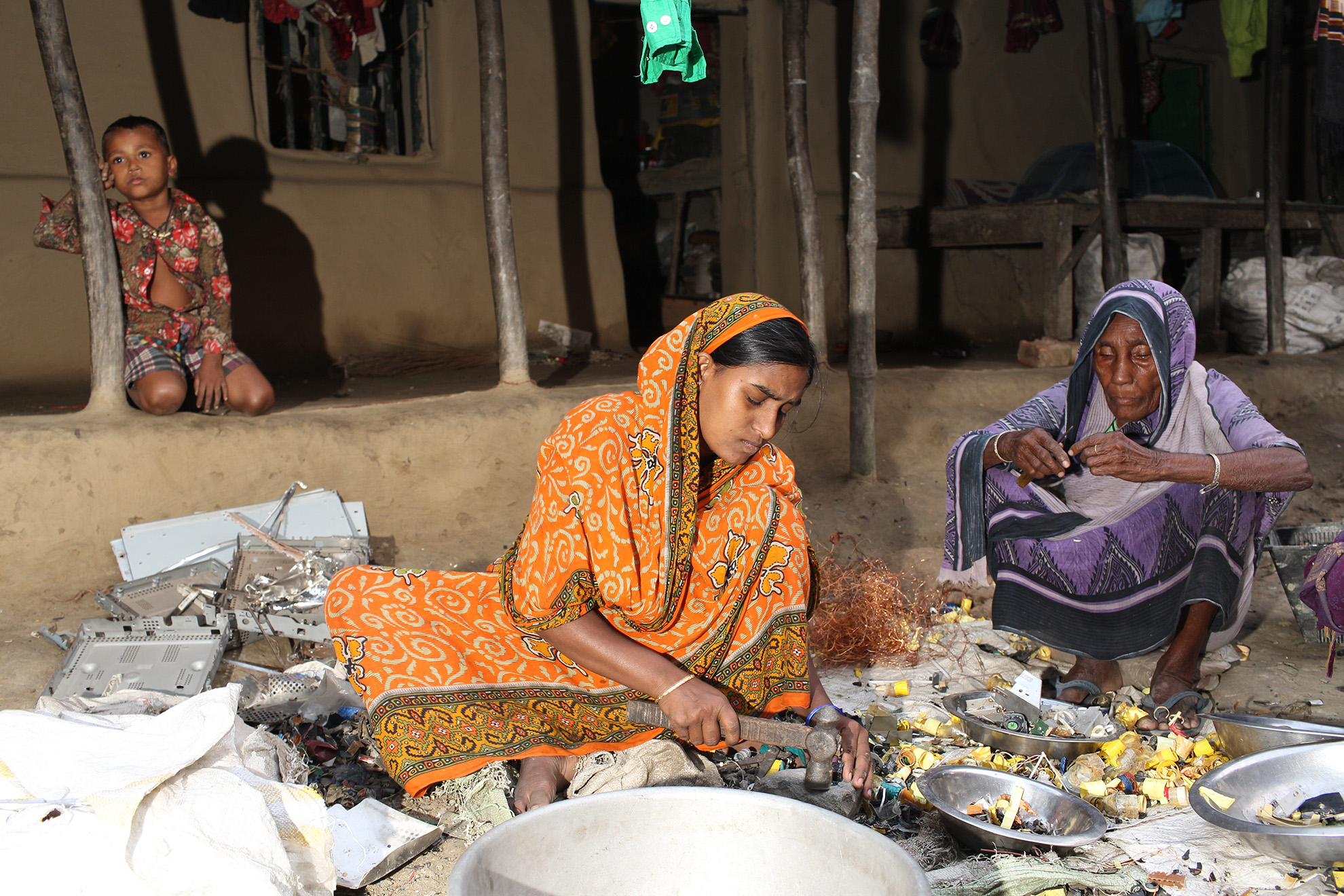
On the busy streets of Chandni Chowk, in the heart of Kolkata, the streets are thronged with people weaving their way between hundreds of electronics stores.
This is the city’s center for electronic goods. Among the retail stores offering the latest cellphones, laptops and gadgets, a small army of secondhand salesmen operate out of small stalls on the street and tiny rooms squeezed in the narrow alleyways.
This is where Prosenjit Singh is likely to be found. The 28-year-old secondhand electronics waste dealer is one of the few operators trying to make the transition from informal to formal, government-approved recycling.
“We are collecting material, by tender position, from many companies like LG and Samsung,” he says. “After 2008, the companies have told us that new rules have come for electronic items. After that, from 2010, we did not collect any material from those companies. Before we were collecting materials from those companies and selling those parts [such as] printed circuit boards (PCBs), plastics, iron and selling it on to others.”
For those like Singh, who want to make the change from informal to formal, the transition is proving difficult. His business is on hold as he waits to become one of the first informal recyclers in the state of West Bengal to be granted official permission to handle e-waste.
New national regulations introduced by the government in 2008 and 2011 have laid out stringent requirements for those who wish to formalize their recycling businesses. It’s an encouraging sign, but start-up costs of more than $15,000 are proving to be prohibitively expensive for most who work in the city’s informal sector.
“The informal sector has limited resources and limited capital. There is no support from the government,” Singh explains. After a year and a half of following the application process, he is still waiting for approval.
“Ultimately, we have to clean [up] our nation,” says Singh. “That is the important thing. When I came into this sector, I didn’t know anything. We realized what we are doing to nature and also to people who are working with us. The government has to help all the informal sector formalize. We have to do this for people, to save nature and save the people.”
Back in the village of Sangrampur, the sound of hammering and plastics cracking combine with frogs croaking in a nearby pond. The sun pulls itself down over the horizon, as the day draws to an end.
Before the workers can finish, however, a small tricycle appears from around the corner of a building. A new batch of computers has arrived for processing.
Hopping off his tricycle, a villager starts unloading his cargo. He hands the circuit boards and wiring off to a small group of waiting children. They carry the electronic goods from the road to their nearby homes where the electronics will be broken down.
It’s a familiar sight in the village where children, along with their siblings and parents, collectively dismantle and handle the growing piles of waste.
Children are particularly susceptible to exposure to toxic metals, but the long-term effects of this exposure are still yet to be seen in this community and many others like it across the country. Likewise, the environmental impact of the slow toxic accumulation in the water and soil looms in the future.
As Mahesh of Toxic Links explains, “Over time, the health effects of toxic elements like lead and mercury, which are present in the electronics which people get exposed to, [will] have very long-term health impacts. I think in another 10 years, we will see the health problems actually coming to the front and the increased waste is only going to go up. It is the right time to put a stop to it and see that it doesn’t increase and impact the health of lots of people who are employed in this area.”




